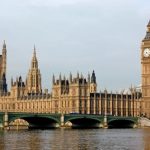Chelgate Local Newsletter – May 2023

Welcome to our May issue of Planning Ahead. We hope you all enjoyed the Coronation Bank Holiday weekend.
This is our post-election edition. With all the major changes arising from the local elections, we have augmented our elections page with the results, changes of power and councillor numbers. This covers our operating areas: the Home Counties, East Anglia, and the Midlands area. Further analysis has been provided for certain councils. This month, we also have articles that delve into a national perspective of the local elections; an article on the most recent developments and scrutiny over the NPPF reforms; and an article on the resurgence of solar parks.
There is also information on a forthcoming event that our director of planning and property – Michael Hardware – will be speaking at. Click on the link below to find about the event and booking details.
Enjoy!
Local Elections – National Perspective
The Conservative party took a thumping in last week’s local elections losing over 1,000 councillors and control of 48 councils. For the first time since 2002, Labour is the largest party of local government with 2,674 councillors, as opposed to the Conservatives 2,296 and LibDem 1,628.
Although it sounds dramatic, the swing from the Conservatives to Labour suggested by the polls did not materialise; compared to the 2019 results, the Conservatives lost just 2.2%, Labour gained 6.5%, the LibDems gained just 0.6%. The polls predicted a greater increase in support for Labour but instead it was shared with the LibDems and the Greens, who had their best local election results. There were losses for independent councillors and resident councillors (a fall of 20%).
6.5%, the LibDems gained just 0.6%. The polls predicted a greater increase in support for Labour but instead it was shared with the LibDems and the Greens, who had their best local election results. There were losses for independent councillors and resident councillors (a fall of 20%).
If the results were transposed into a General Election (according to the BBC), Labour would have a 35% vote share, the Conservatives 26%, and the LibDems 20%. According to Sky News, this would mean Labour would become the largest party, but 28 seats short of an overall majority, which would mean a coalition government.
The poor results were certainly not unexpected. The leadership debacle last autumn and the cost-of-living crisis have all eroded Conservative support. We can expect to see the Government doubling-up on delivering its five pledges over the coming months, running up to the General Election next year. These results suggest that the election is now more likely to happen in the autumn than in May, but that is a decision which would be made towards the end of the year.
For more information on the local election please see the summary on our election page and for more detail on the impact this could have, please contact Mike Hardware.
DLUHC Select Committee – second oral hearing
On Monday 24 April, the Levelling Up, Housing and Communities Committee held its second oral hearing on reforms to the national planning policy. The witnesses this time around were Housing Minister Rachel Maclean and Director General of the Department for Levelling Up, Housing and Communities, responsible for regeneration Emran Mian.
The discussion was focused on dealing with government policy that has been released over the past several months; this has caused great confusion on all sides of the discussion. Several local authorities have delayed their Local Plans because of Michael Gove’s December Statement. This, consequently, has traffic jammed the whole process in certain areas.
Regrettably, whilst some of the discussion was informative, Maclean deflected from answering the most concrete questions by insisting that the specifics will only be outlined once the consultations have taken place and a final document is published.
Advisory v Mandatory Housing
 One of the biggest questions being asked was how the government planned to keep its target of building 300,000 homes per year by the mid-2020s while – amongst other issues – the move to advisory housing targets for local areas, rather than mandatory targets.
One of the biggest questions being asked was how the government planned to keep its target of building 300,000 homes per year by the mid-2020s while – amongst other issues – the move to advisory housing targets for local areas, rather than mandatory targets.
Natalie Elphicke MP quizzed the Minister over the monitoring of housing development across the UK, which is something that is not currently in place, to try and coordinate the gap between the target set at the national level to meet the national housing needs and the cumulative sum of all local authority targets set.
Mian was quick to state that the 300,000 target remains a guiding principle. He also highlighted that after speaking with local planning authorities many had a good reason not to fulfil their portion of the 300,000 houses, such as housing character and green belt space. Other planning authorities too, are pushing above their 100% portion – such as Birmingham – which will help balance out the numbers more. So, whilst monitoring will be carried out, a blanket mandatory target to fill the gap will not be expected from the local planning authorities.
Maclean also pointed out that, concerning applications, the Government will continue to have powers, such as the Secretary of States intervention, if it is deemed necessary.
Developer Accountability
Another discussion took place focusing on the accountability of rogue developers. With proposed changes expected in the NPPF, one of the consultations taking place will be looking at “past irresponsible behaviour” and how tracking this can help local authorities hold irresponsible behaviour accountable.
Maclean acknowledged that not all developers are irresponsible, but that for those who are, the local authority, cannot hold them to account with the current legal framework. Maclean stated that when they are looking at planning permissions that are granting in the future if they have a developer who has a bad track record of doing that on multiple occasions, they can look to refuse to grant the planning permission.
Asked how it would fit in with the long-established principle that permission is granted with the land and not the developer, Maclean gave a vague indication that there will be a material consideration – this has not yet been fully developed, however. On top of this, more enforcement powers will be given to local authorities, but these too were not listed.
A new power that is being introduced into the levelling-up Bill – which is currently at the committee stage in the House of Lords – is a power to tackle building out reasonably slowly, was also dissected with Kate Hollern stating that this could leave local authorities open to multiple legal challenges from developers, which would be incredibly costly for the authority.
Emran responded that it was ultimately down to the local planning authority to make the decision. Emran believes that these powers would only be used “when there was very clear evidence, a consistent pattern perhaps for a particular developer having failed to respect planning permissions in the past”.
What happened across our operating area?
When it comes to campaigning in local elections, a classic technique used by all political parties – who are expecting heavy losses – is to inflate the number they expect to lose, so that when they don’t lose that many, it allows them to have a positive spin.
Now, when the number they inflated is surpassed in the election, a harsh reality reveals itself to them; what to do next?
This was Sunak’s first election and a test of his leadership. Across the country the message was the same – people are unhappy with the current government. Whether it be with the Cost-of-Living crisis, the NHS or strikes, every pocket of identity that would normally vote conservative steered in another direction at this election.
In the home counties, deep blue districts came out in yellow, red and grey. Medway Council, a conservative district for 20 years, was taken over by Labour who now have overall control. Labour also won overall control of Bracknell Forest, Gravesham and Dover to the surprise of most, whilst also picking up numerous seats across the No overall Control Authorities. The Lib Dems won outright across Sussex, scooping up the likes of Chichester, Horsham, Guilford and Surrey East amongst many more. They have also pierced into conservative heartlands such as Windsor and Maidenhead and Dacorum. In Oxfordshire, there is no longer a conservative majority with the Lib Dems controlling the majority of districts.
Across Essex the Conservatives held their support, gaining seats in some areas, such as Harlow, Uttlesford, Basildon and Tendring, hanging on to power in Thurrock and Braintree but losing control in Rochford and Brentwood.
losing control in Rochford and Brentwood.
The blue bastion of Hertfordshire saw the Conservatives losing seats across the county but most notably East Hertfordshire where they lost 27 seats with the Greens now the largest party.
Of course, not all the votes went to Labour, and General Election-looking Conservatives may be appeased by this. Many are pointing to the Projected National Share (PNS) of the vote and saying that, although the Conservatives were hammered, the votes were distributed amongst Labour, Lib Dems, Greens and Independents. Furthermore, the Labour Party has the same PNS as it did under Corbyn in the 2019 local elections – which did not end well for Labour.
But despite the narrative being picked up by the conservatives that this number will not lead the Labour Party to have an overall majority, what they are ignoring is that regardless, the Conservative Party will no longer be the largest in Parliament. Labour is ahead of the Conservatives by 9 points and is set to win the most seats. Unsurprisingly, the most asked question Sir Keir Starmer has been asked after the elections is “Will you go into a coalition”.
To overcome this, the Conservative Party must change. One senior MP suggested that the Government try to provide a more robust and optimistic plan for the future. It may sound simplistic, but in the past, it has worked wonders. In July 2019, then-Prime Minister Teresa May took on heavy losses at the local election. This led to her resignation. Yet, by the end of the year almost six months later, the conservatives entered government with an 80-seat majority.
There are of course different factors, and Rishi Sunak is unlikely to step aside now. A lot of people are also looking for a change. With the continued frustration at all levels of government such as with the changes in NPPF, sewage in rivers and soaring energy prices, the conservatives will need to use this election to reflect on their narrative and position if they are to survive an election.
Solar resurgence
The climate emergency was around long before the energy crisis brought on by Russia’s invasion of Ukraine happened. Solar and wind have seen a resurgence in the past decade, and have increasingly provided a greater proportion of our energy, helping us move towards our net zero targets.
Last year, wind was the second largest source of energy (25%) with gas the highest (38%). Solar provided less than 5%. As this article is being written, the wind is providing 29% of energy (it is a fairly windy day), gas 26%, solar 14% and nuclear 11%. We are also importing 15% from Europe.
 Russia weaponising gas supplies highlighted our energy security issues: North Sea gas reserves dwindling, not enough gas storage and unreliable gas supplies from elsewhere. Plans had to be in place should this become a crisis and demand had to be managed – luckily only the lightest of these had to be used. But it hardened our resolve to increase our energy security.
Russia weaponising gas supplies highlighted our energy security issues: North Sea gas reserves dwindling, not enough gas storage and unreliable gas supplies from elsewhere. Plans had to be in place should this become a crisis and demand had to be managed – luckily only the lightest of these had to be used. But it hardened our resolve to increase our energy security.
Offshore wind and solar are the favoured renewable energy sources, with nuclear following up as the longer-term replacement for gas. There has been a proliferation of offshore wind projects over the last decade, and a growing number of solar projects coming forward.
Advances in technology and economies of scale in China have brought the cost of solar panels down to make large-scale solar viable on its own merits without subsidy. It is local councils, however, who have to deal with the proliferation of new solar park applications. Officers and members alike are unfamiliar with solar and struggle to be able to make decisions. Solar applications are usually in isolated areas, often involving “best and most versatile land”. Decisions are a planning balance between the landscape harm and the loss of quality agricultural land against the pressing need to support the growth of renewables to ensure energy security and address climate change.
Solar is not only here to stay but going to grow: the British Energy Security Strategy proposes a five-fold increase in solar energy: from the current 14 Gigawatts (GW) to 70GW solar by 2035. That equates to 1,400 50MW solar parks across the country, enough to power some 23 million homes.
Up-coming event – Housing supply and development in England
Michael Hardware, our director of planning and property, will be speaking at the Westminster Social Policy Forum keynote seminar on housing supply and development in England on Friday 26th May 2023. He will be joining Steve Cole, director of Make UK Modular, and Tom Chance, chief executive of Community Land Trust to present case studies and initiatives in planning, empowerment and affordability in local housing delivery.
May 2023. He will be joining Steve Cole, director of Make UK Modular, and Tom Chance, chief executive of Community Land Trust to present case studies and initiatives in planning, empowerment and affordability in local housing delivery.
Other speakers include Cathy Francis, director of housing strategy, Department for Levelling Up, Housing and Communities, Lucy Greenwood, director of residential research and consultancy, Savills, and Andrew Taylor, group planning director, Countryside Properties.
Michael’s presentation, which is in his role as cabinet member for regeneration and strategic growth at Harrow Council, will be uploaded on our website after the event.
The seminar is online and the agenda can be found here. Booking details can be found here.
Local Plan updates
Chelgate Local has updated its dedicated web page that brings you Local Plan updates for:
Basildon, Brentwood, Castle Point, East Cambridgeshire, Elmbridge, Epping Forest, Harlow, Maidstone, Medway, Mole Valley, Rochford, Runnymede, Sevenoaks, Spelthorne, Thurrock, Uttlesford, Watford, Waverly and many more…
Contact Us
If you would like to know more information on the DLUHC Select Committee or any of the above content please contact us or speak to Michael Hardware
